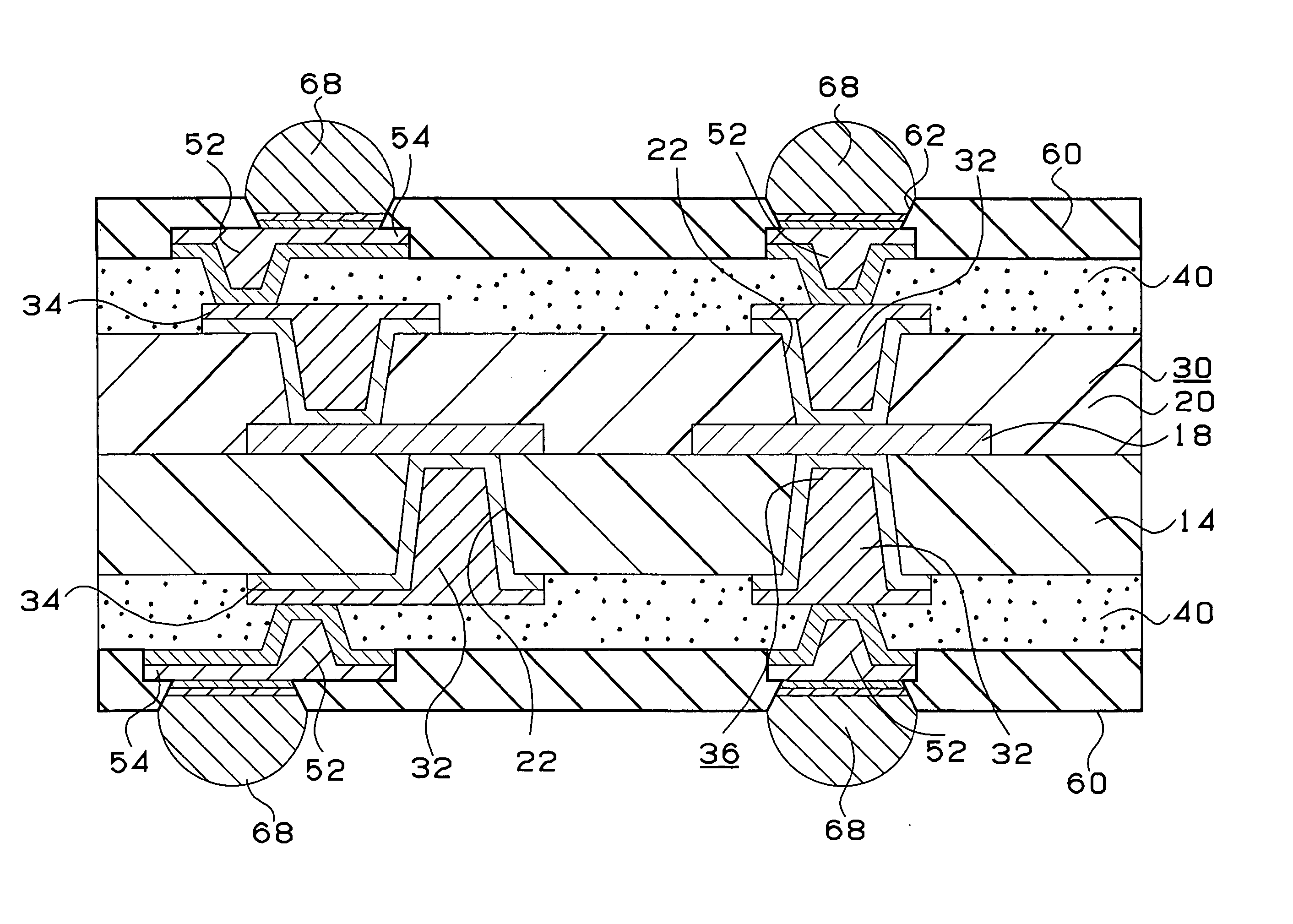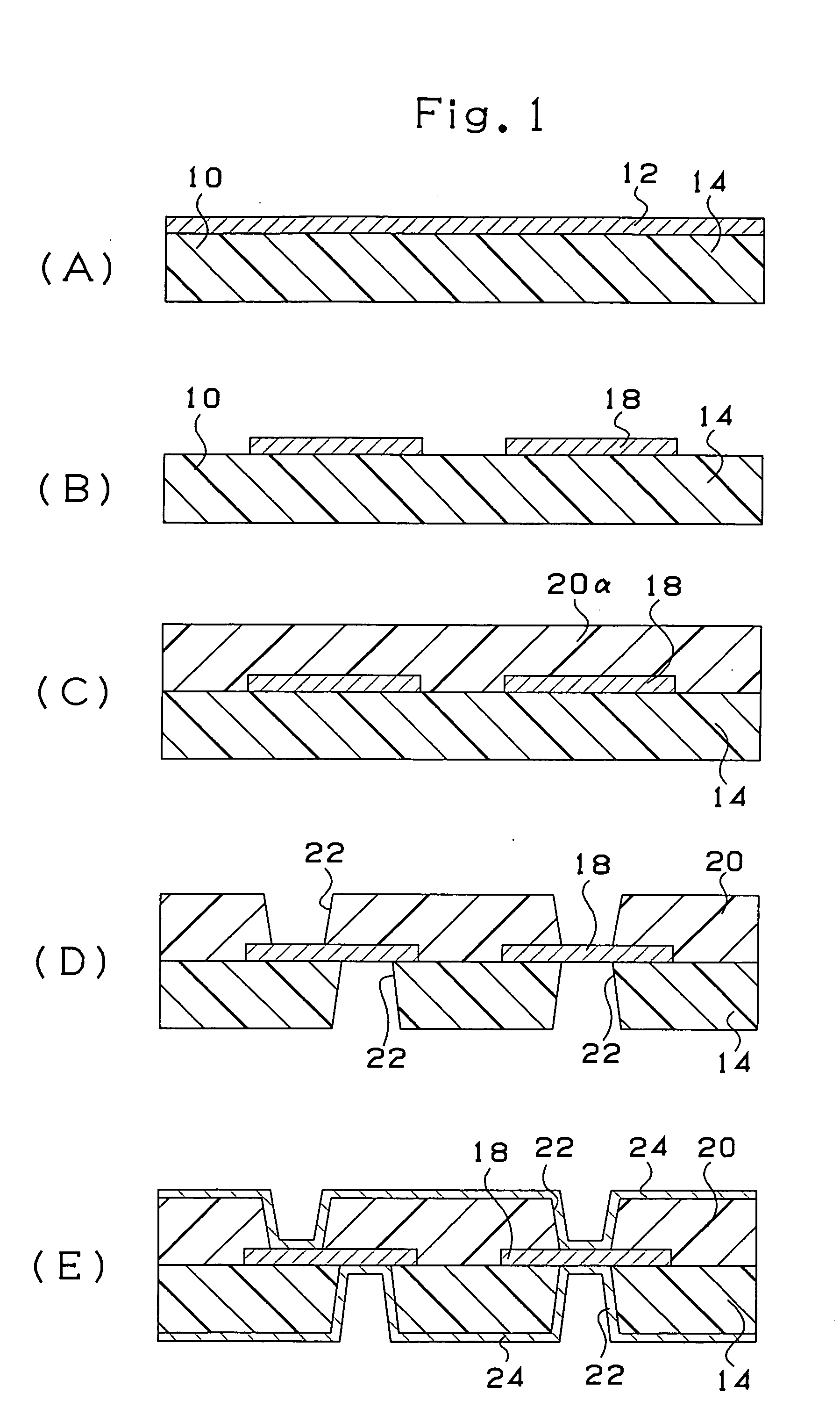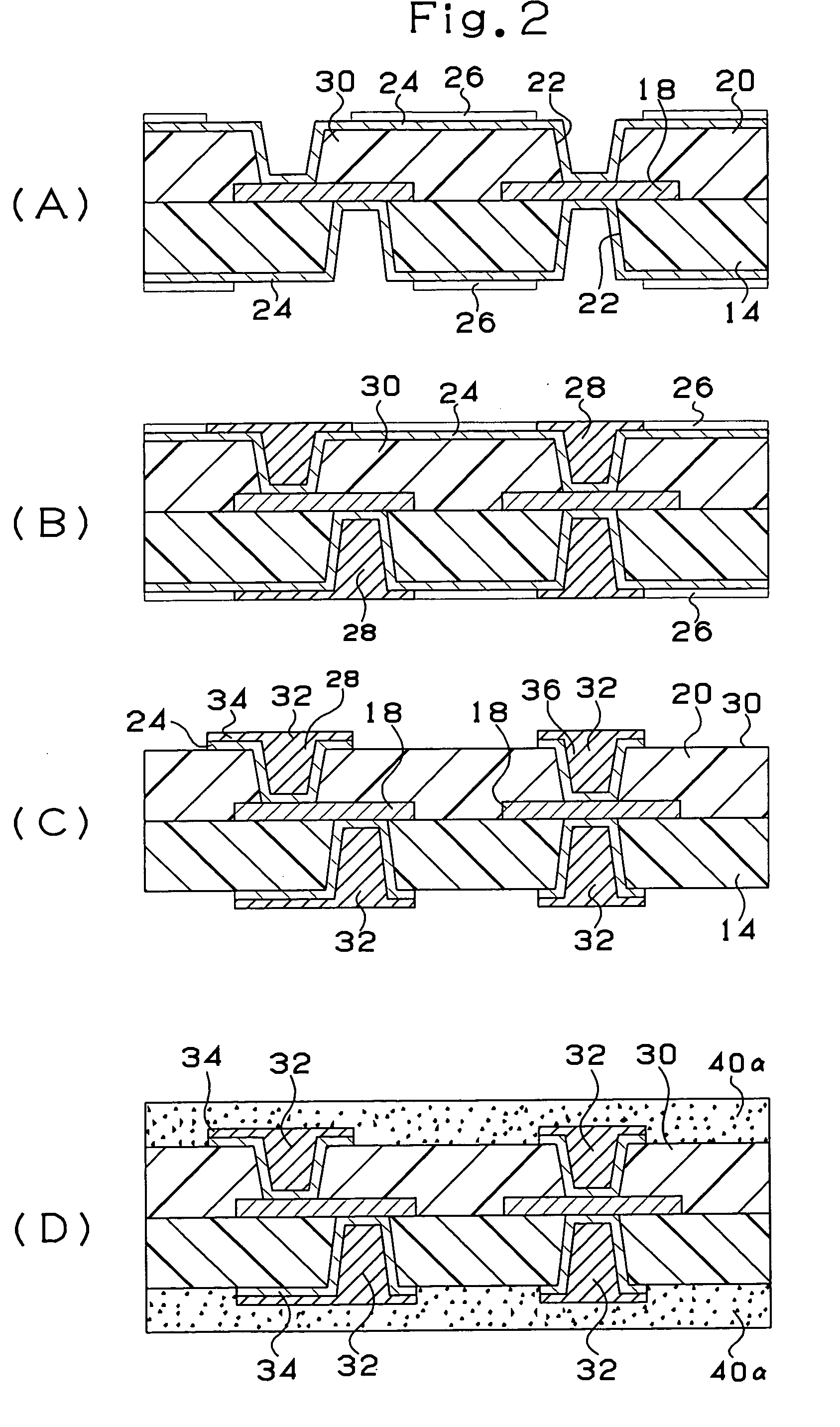Multi-layer printed circuit board and method of manufacturing multi-layer printed circuit board
a printed circuit board and multi-layer technology, applied in the direction of conductive pattern formation, insulating substrate metal adhesion improvement, electric connection formation of printed elements, etc., can solve the problems of deteriorating reliability of printed circuit board connection, inability to form fine through holes, and inability to meet the requirements of quality assurance, so as to shorten the time required for forming openings
- Summary
- Abstract
- Description
- Claims
- Application Information
AI Technical Summary
Benefits of technology
Problems solved by technology
Method used
Image
Examples
first embodiment
(Fourth Modification of First Embodiment)
The structure of a multi-layer printed circuit board according to a fourth modification of the first embodiment will now be described with reference to FIG. 11.
The multi-layer printed circuit board according to the first embodiment described with reference to FIG. 6 incorporates the solder bumps 68 for connecting a daughter board, the solder bumps 68 being disposed on the lower surface of the multi-layer printed circuit board. On the other hand, the fourth modification incorporates conductive connection pins 78. Since the other structure is similar to that of the multi-layer printed circuit board described with reference to FIG. 6, the other structure is omitted from description.
[Second Embodiment]
The structure of the multi-layer printed circuit board according to a second embodiment of the present invention will now be described with reference to FIG. 18 which is a cross sectional view.
A multi-layer printed circuit board 210 accordin...
second embodiment
(Second Modification of Second Embodiment)
The cross section of a multi-layer printed circuit board according to a second modification is shown in FIG. 24. The structure of the second modification is similar to that according to the second embodiment. Note that the multi-layer printed circuit board according to the second modification has the structure that the interlayer resin insulating layer 250 and the interlayer resin insulating layer 281 are constituted by adhesive agent 257 for the upper layer and adhesive agent 255 for the lower layer each having the following composition. Moreover, coating in the liquid state is Performed, and then exposure and development were performed to form the openings.
A. Raw Material Composition for Preparing Adhesive Agent for Electroless Plating (Adhesive Agent for Upper Layer)
[Resin Composition (1)]
Mixing and stirring of 35 parts by weight of resin solution obtained by dissolving 25% acryl material of cresol novolac epoxy resin (manufactured ...
third embodiment
The third embodiment enables through holes each having a diameter of 100 μm or smaller can reliably be formed. Moreover, any air bubble is not formed and the interlayer resin insulating layer can be flattened. Therefore, the connection easiness and the reliability can be improved. When the interlayer material (the resin insulating layer) of the core substrate is made of the same material as that of the interlayer resin insulating layer, the layers does not easily separated. As a result, the reliability can furthermore be improved.
[Fourth Embodiment]
The structure of a multi-layer printed circuit board according to a fourth embodiment will now be described with reference to FIG. 46 which is across sectional view showing a multi-layer printed circuit board 410 serving as a package substrate and FIG. 47 showing a state in which an IC chip has been mounted so as to be joined to a daughter board.
As shown in FIG. 47, the multi-layer printed circuit board 410 incorporates a core substra...
PUM
| Property | Measurement | Unit |
|---|---|---|
| Thickness | aaaaa | aaaaa |
| Diameter | aaaaa | aaaaa |
| Solubility (mass) | aaaaa | aaaaa |
Abstract
Description
Claims
Application Information
 Login to View More
Login to View More - R&D
- Intellectual Property
- Life Sciences
- Materials
- Tech Scout
- Unparalleled Data Quality
- Higher Quality Content
- 60% Fewer Hallucinations
Browse by: Latest US Patents, China's latest patents, Technical Efficacy Thesaurus, Application Domain, Technology Topic, Popular Technical Reports.
© 2025 PatSnap. All rights reserved.Legal|Privacy policy|Modern Slavery Act Transparency Statement|Sitemap|About US| Contact US: help@patsnap.com



